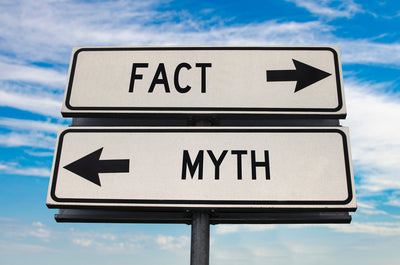5 Surprising Myths About Drinking Water
RSS
Analies Dyjak, M.A. & Christina Liu, B.S., M.B.A.
MYTH #1: It’s Safe To Drink and Cook With Hot Water From Your Faucet.
False. It might seem like a time-saving measure, but it can cause negative health outcomes. Lead, which is commonly found in pipes, is more soluble in hot water than cold water. Hot water makes it easier for lead to leach from pipes and enter the water coming out of your faucet.
Hot water tanks are notoriously filthy places, and can act as an incubator for bacterial growth. Most people affected by Legionnaires Disease in the U.S. are exposed to the bacteria from their hot water tank. In short, drinking and cooking with water from the hot side of your faucet is not worth the potential for negative health outcomes.
MYTH #2: Boiling My Water Will Remove The Dangerous Contaminants From The Water.
Partially true. Boiling your water can in fact remove biological or bacterial contaminants that might be present. This is why water utilities will issue “boil water advisories” after a water main break or a problem with the disinfection system. Unless you get your water from a private well that has known problems with biological contaminants, there’s no need to boil your water on a daily basis. However, boiling your water does not remove contaminants like Lead, Arsenic, Mercury, Chromium 6, or PFAS. These contaminants fall under a different category and are much more difficult to remove. If you’re looking to remove PFAS, lead or other metals from your drinking water, boiling it will unfortunately not do the trick.
MYTH #3: Bottled Water is Safer than Tap Water.
Not necessarily. If you’re looking for an alternative to tap water with rigorous monitoring standards, strict regulations, and transparency, bottled water is not the solution for you. Here’s why: Federal standards for tap water and bottled water are almost identical. Both have to meet monitoring requirements that were set in the 90’s, and have yet to be updated. FDA regulations have an allowable level of lead in bottled water of 5 parts per billion, even though EPA, CDC, the American Academy of Pediatrics and other health organizations have all acknowledged that there is no safe level of lead for children.
Also:
-
25 - 45% of bottled water comes from municipal sources, meaning it's just bottled tap water.
-
Plastic bottles can leach BPA & other chemicals.
-
Plastic water bottles are one of the largest sources of non-renewable plastic waste in the world.
Bottled water can be a great temporary tool if your community is in the middle of widespread tap water contamination, but it’s not the long term solution to drinking water problems.
MYTH #4: The Red Dye Test Lets Me Know That My Filter is Removing Harmful Chemicals.
False. The Red Dye Test is a visual demonstration used by water filter companies to show “filtration performance.” Water with red food coloring (meant to represent contaminants) is passed through a filter. The implication is that if the water is clear when it comes out the other end, then the filter also removes every other contaminant that could be present. Unfortunately this isn’t the case and red dye is not a “proxy” or “surrogate” for dangerous contaminants. The Red Dye Test only shows a filter's ability to capture large, simplistic, and easy-to-remove red dye molecules from water, and is not an accredited scientific test method. Identifying a representative proxy/surrogate requires that a credible testing body (e.g NSF/ANSI) has actually done experiments to validate it.
MYTH #5: Alkaline Water is Better For You Than Regular Water.
False. The water ionizers on the market claim to create alkaline water through electrolysis. The idea is that water is split to form hydrogen and oxygen by an electric current, so that water near the anode is acidic and water near the cathode is alkaline. The idea is that you can then siphon off acidic or alkaline water using a tube next to the cathode or anode.
Here's the problem: That's not really what's happening. Pure water or water with relatively low mineral content conducts electricity very poorly, so it can't undergo electrolysis to any significant extent.
Also:
-
There’s no scientific evidence that water with a higher pH can provide health benefits.
-
Your stomach acid will neutralize the pH before it enters the bloodstream.
5 Contaminants That Are Likely in Your Drinking Water
What's The White-Chalky Residue on My Stainless Steel Cookware?
Everything You Need To Know About PFAS Chemicals:




